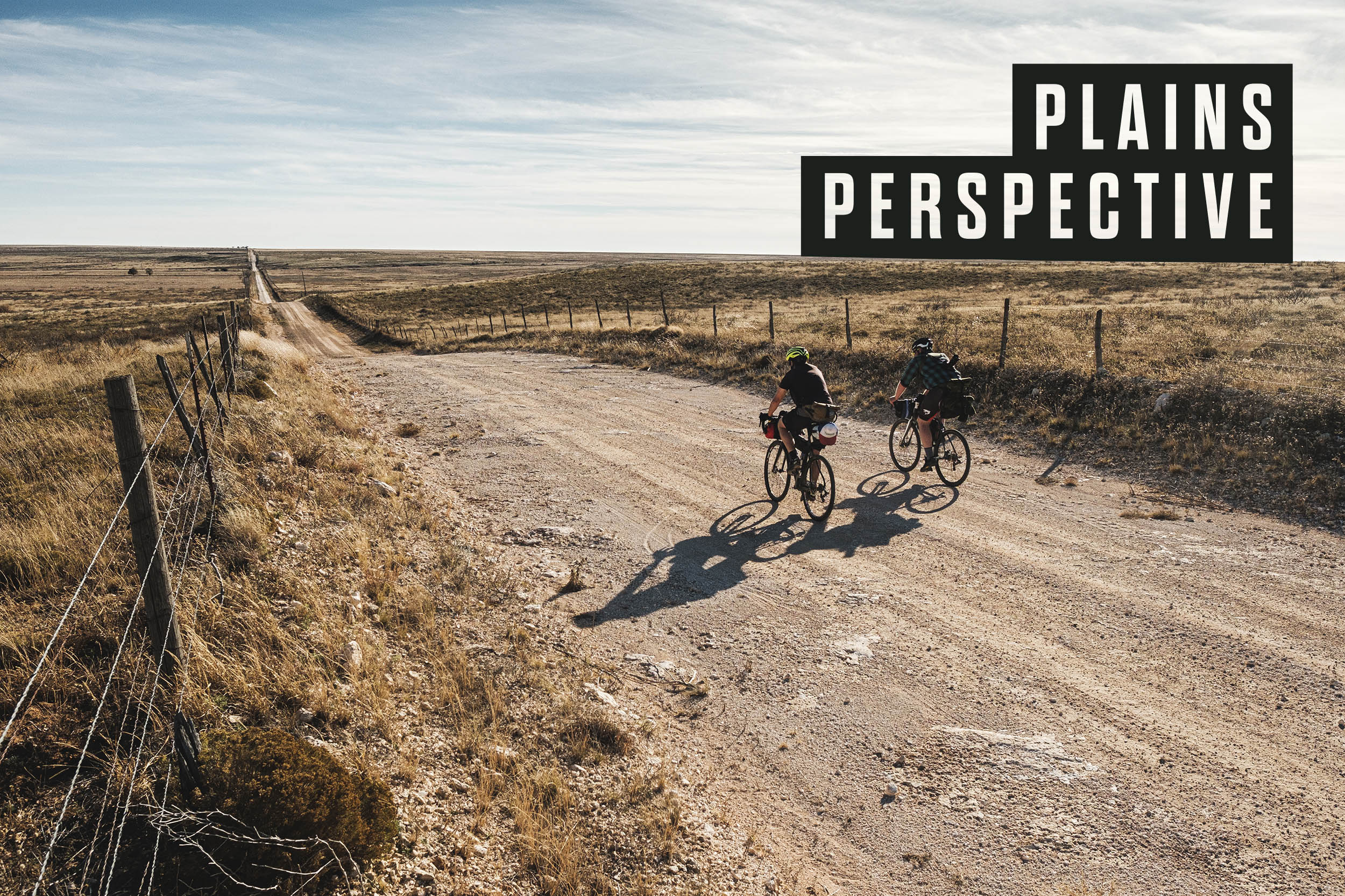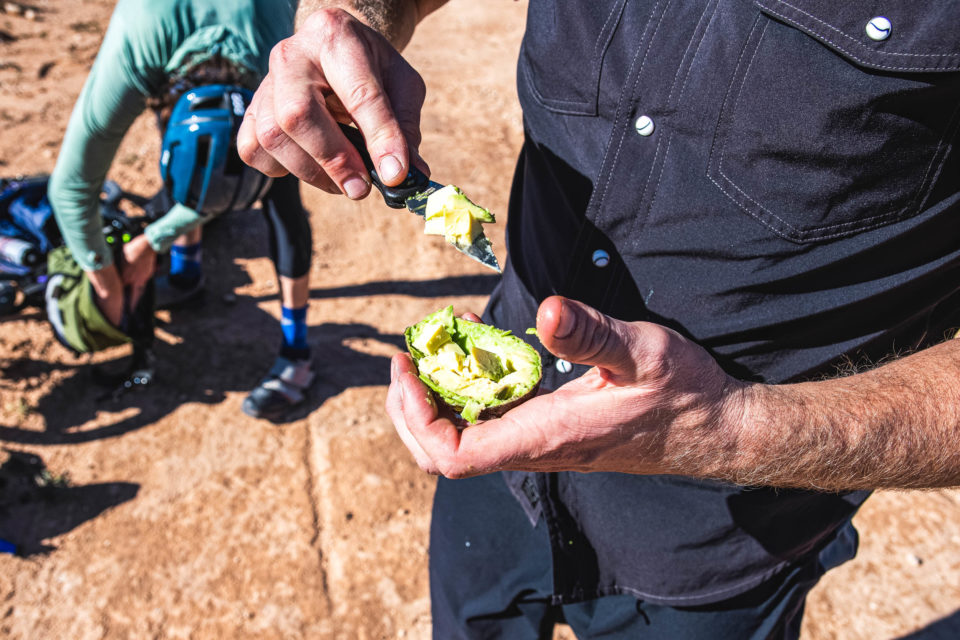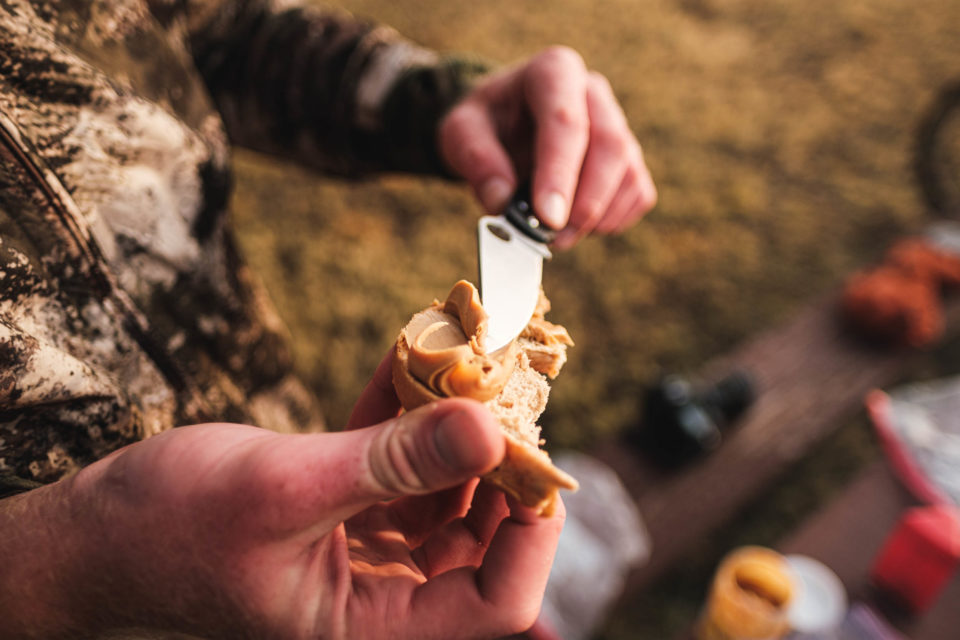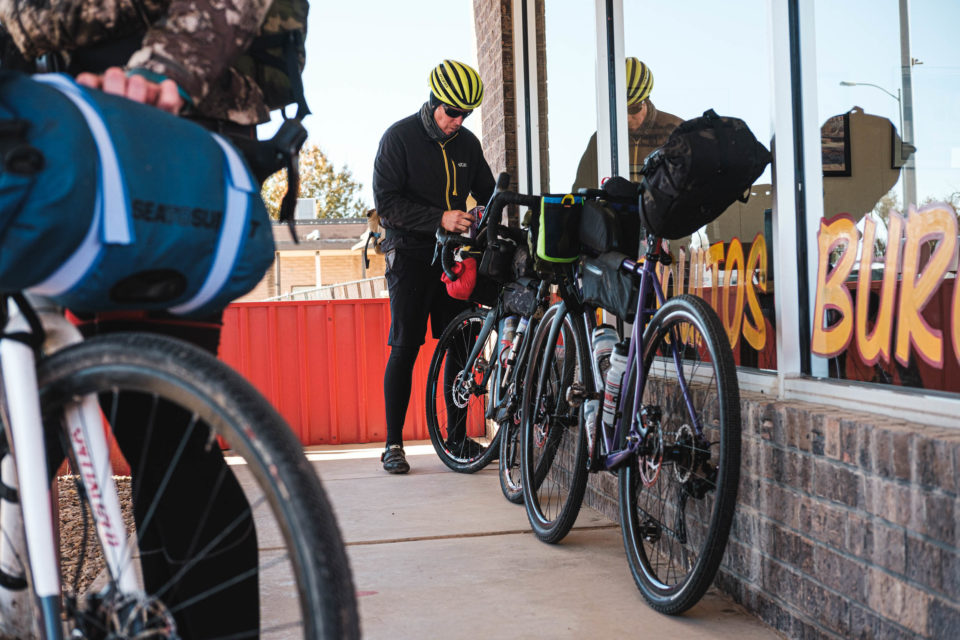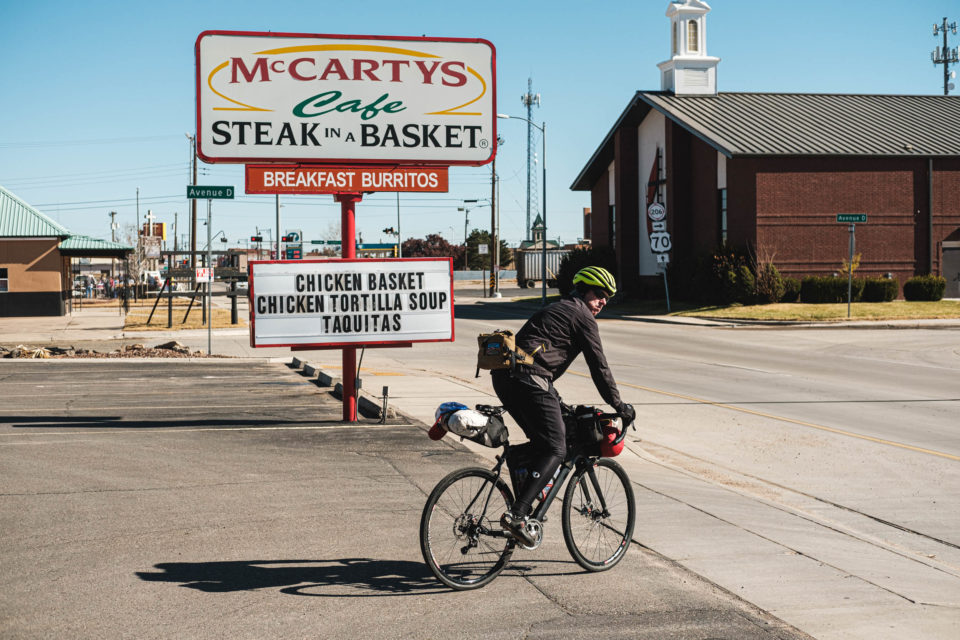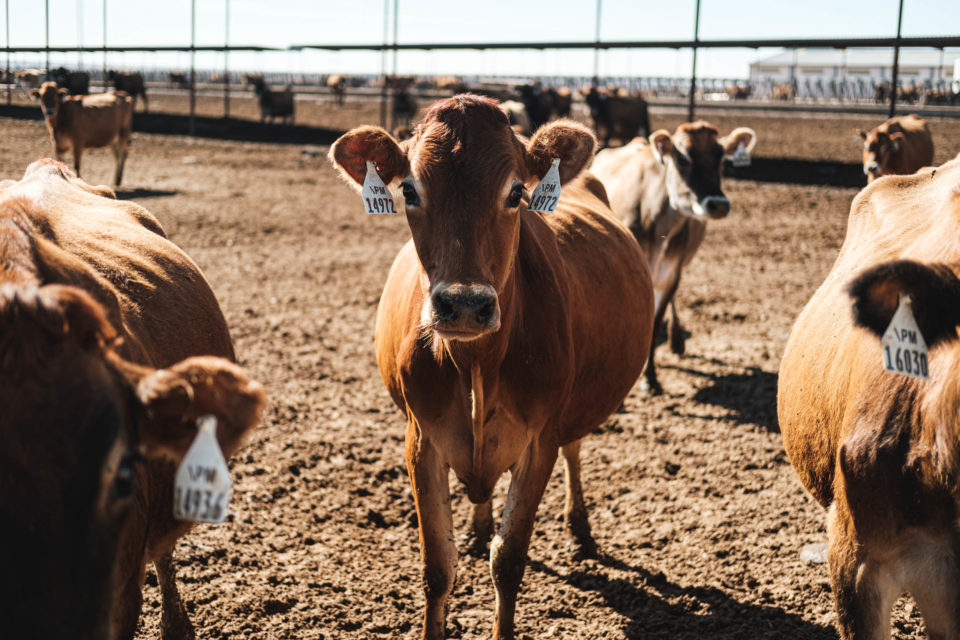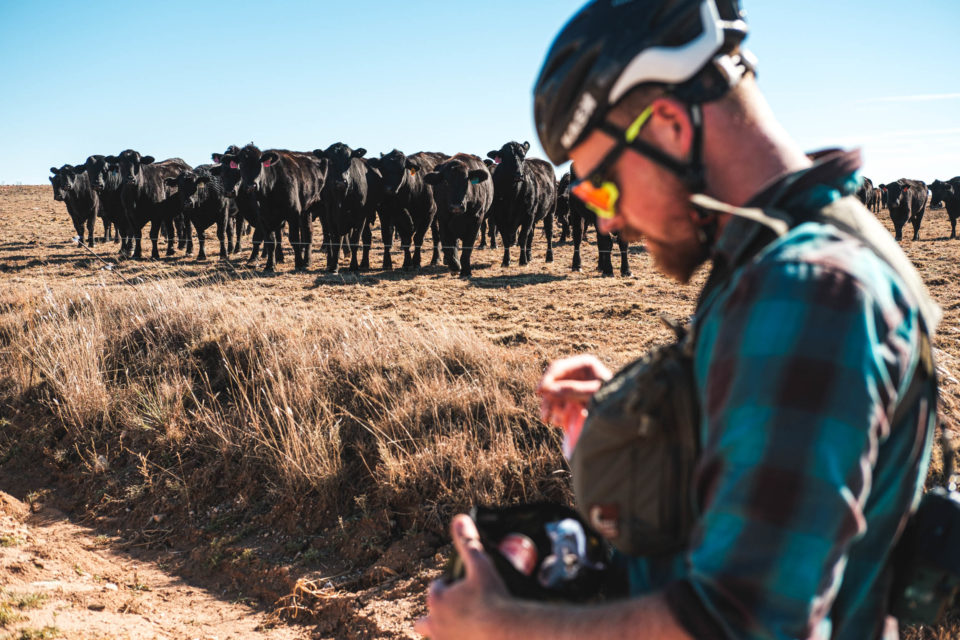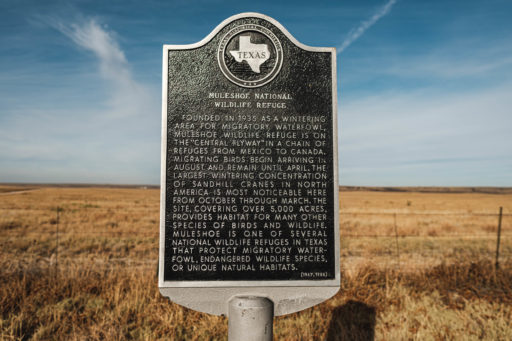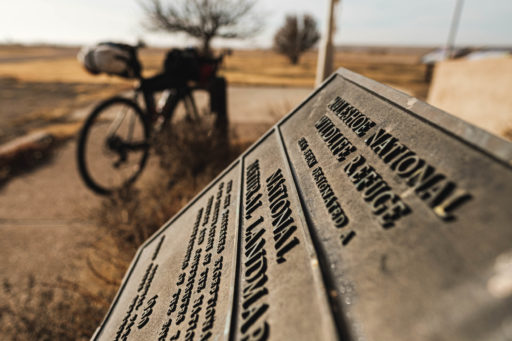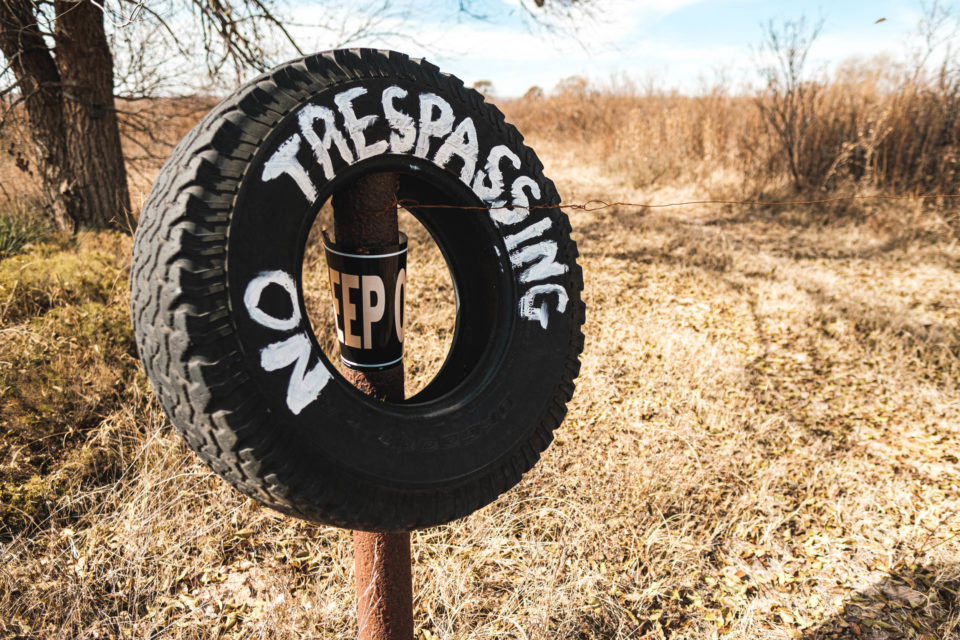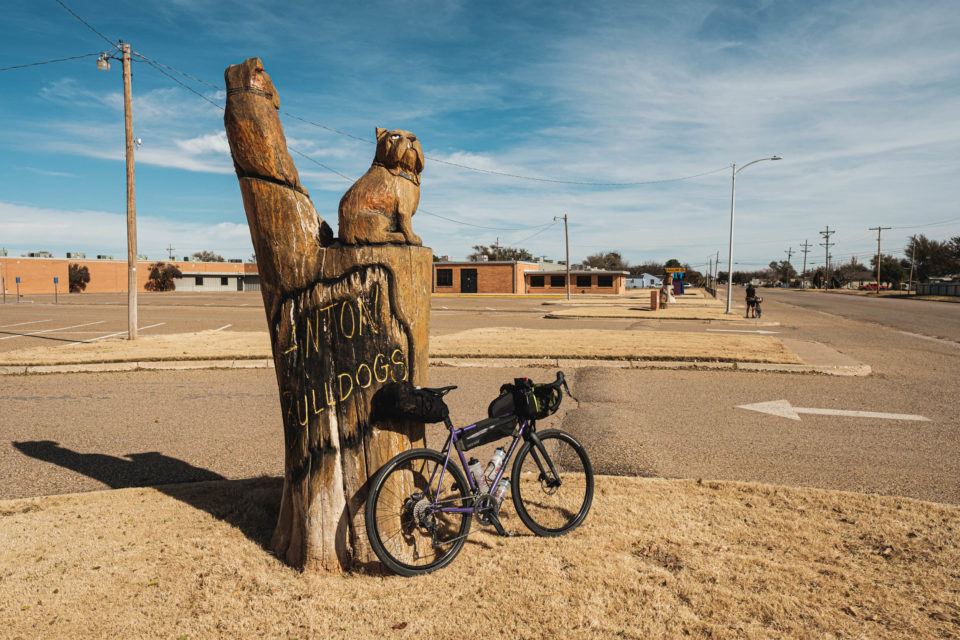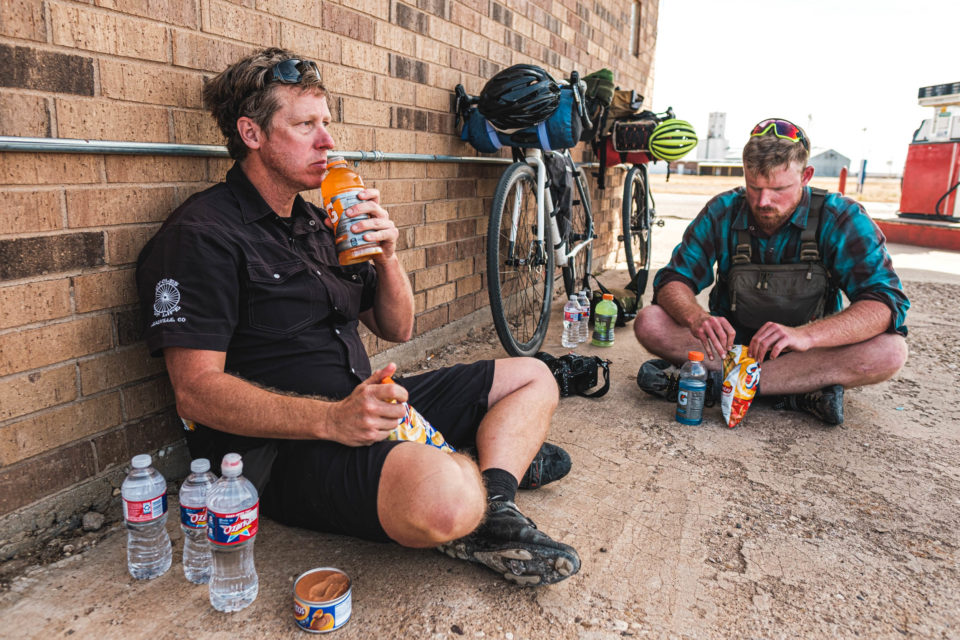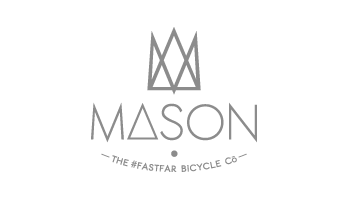Plains Perspective
Originally published in The Bikepacking Journal 04, Plains Perspective recounts a four-day journey through a remote area of Texas. It’s a story about the bonds formed through bikepacking, a reflection on place and history, and proof that adventure can be found anywhere…
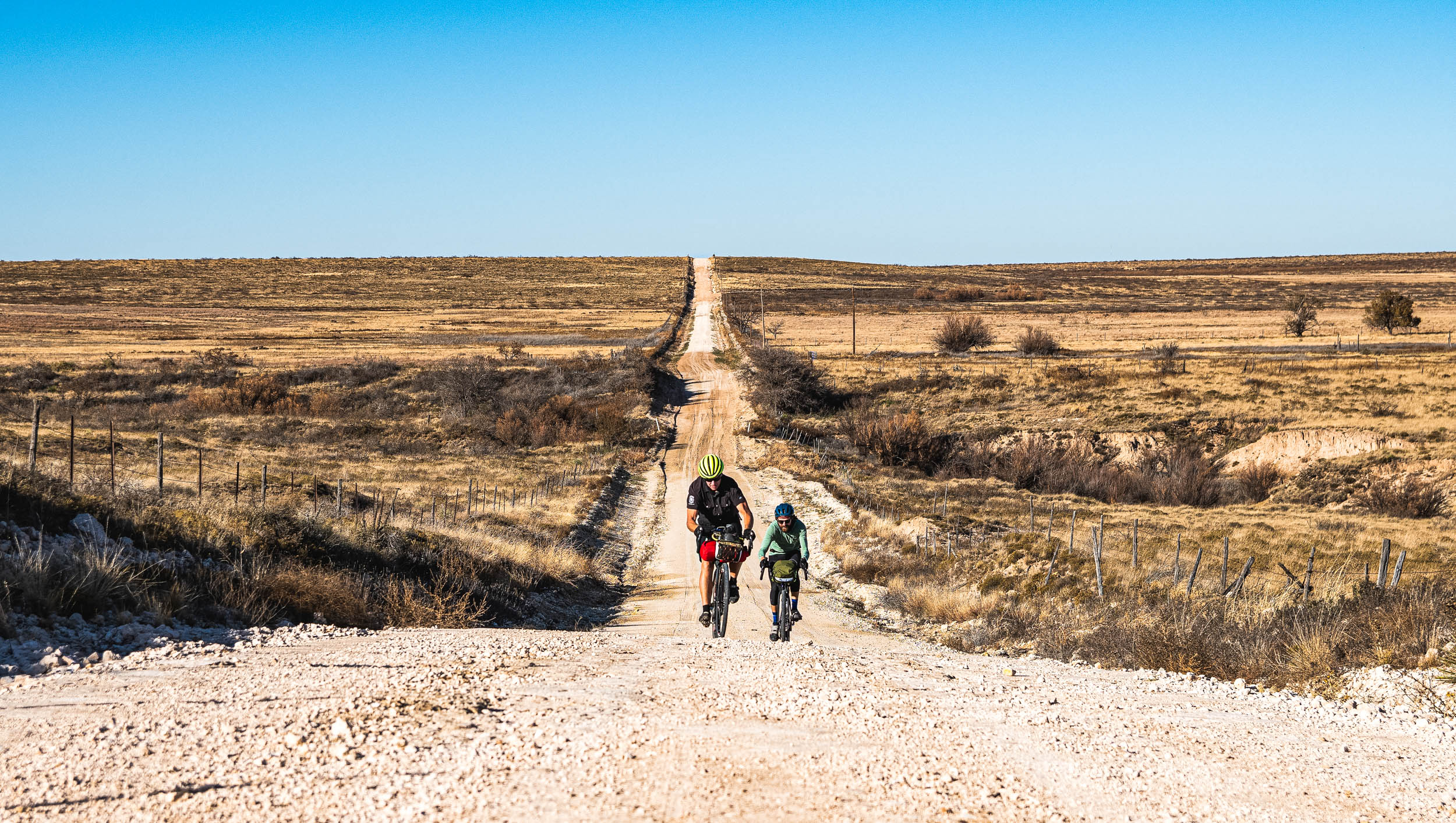
Arch, New Mexico, is a ghost town, but not in the romantic sense. It’s more like a place that never got started. There’s nothing here but half a dozen houses and some faded metal buildings. I’m on a farm-road overnighter with friends Jerod Foster and Justin Rex. We just rolled off the gravel and thought there might be water here. We pedal circles on the asphalt intersection like a group of kids killing time. There’s nothing, not a soul in sight. People do live here, as indicated by the little gray satellite dishes atop the smattering of houses along the two-lane black top. We’re at the crossroads of Roosevelt and Roosevelt. The nexus of the universe? Could be. We are in New Mexico. Maybe it’s a metaphor for my life? I’m moving forward, but I keep winding up in the same place. I shake my head. Nah! It’s just an intersection.
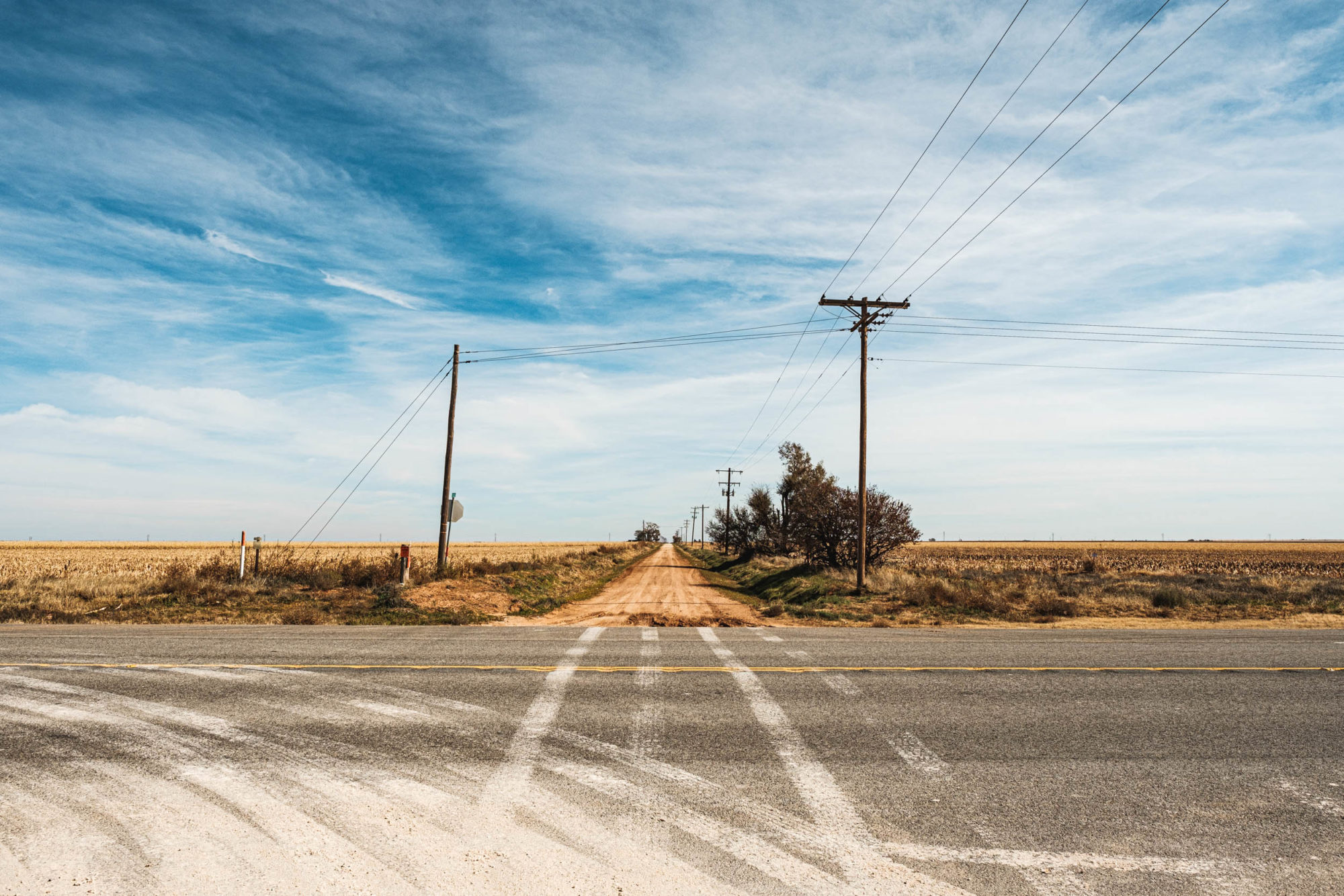
We roll on to the Texas border for lunch. With minimal topography and dormant flora, we’re the only landmarks that stand out in this featureless landscape. Rogue trees are cluttered around homesteads and cling to dry creek beds deep inside private-property fence lines. “No Trespassing” is the message posted loud and clear. We are banished to the world between the ditches, and it feels unsatisfying to stop and eat while standing on some random spot in the middle of the stark plains. We cross into Texas and encounter a slight bend in our gravel path. This will do. It has to. The only problem is we’re smack dab in the middle of the lunch crowd. A small herd of black Angus cattle are lingering about the interior perimeter of a hot wire fence. They moo, shimmying and shifting among each other. A big guy up front fluidly glides his tongue in and out of his nose. These bovines are totally devoid of manners. But . . . we are bikepackers. Folks in restaurants have obliged our stink for years, so we can at least tolerate these fellas and their poor fence etiquette.
My goal on this trip is to snack on whole, unprocessed foods. I ate boiled potatoes earlier. Now for lunch, I’m eating cheese and an entire avocado. I slice the avocado inside its skin and scoop a section out with my knife. Justin leans in and snaps a couple of photos as I take a bite. He’s got a giant grin on his face, or maybe the sun’s just in his eyes. “Half the pictures on this trip are going to be Brandon eating,” he says. That’s fair. He got a great shot of me eating a burrito this morning at McCartys Cafe in Portales. In my defense, my hunger is endless. Our lunch companions appear to be fine though, and all they’re eating is grass. I can’t eat grass. I can eat the cattle. But not here! For one, that’s considered cattle rustling, and the Texas Rangers frown upon such things. But, this model of animals grazing and humans hunting and consuming the grazers is the story of life on the Great Plains since before recorded history.
The Great Plains is that wide swath of flat, sometimes rolling grassland and arid prairies east of the Rockies and west of the Mississippi River. North to south, it starts in Canada and ends in Texas. For most of the United States, it’s a forgotten swath of land many consider flyover country. We are traversing the Llano Estacado (Staked Plains)—the southern portion of the Great Plains that straddles eastern New Mexico and the Texas Panhandle. You either get this country or you don’t. There are a million stories and lives led down here in the yellow grasses and irrigated crop circles. The most fascinating is the one about the exchange of energy and how it has propelled life here for eons.
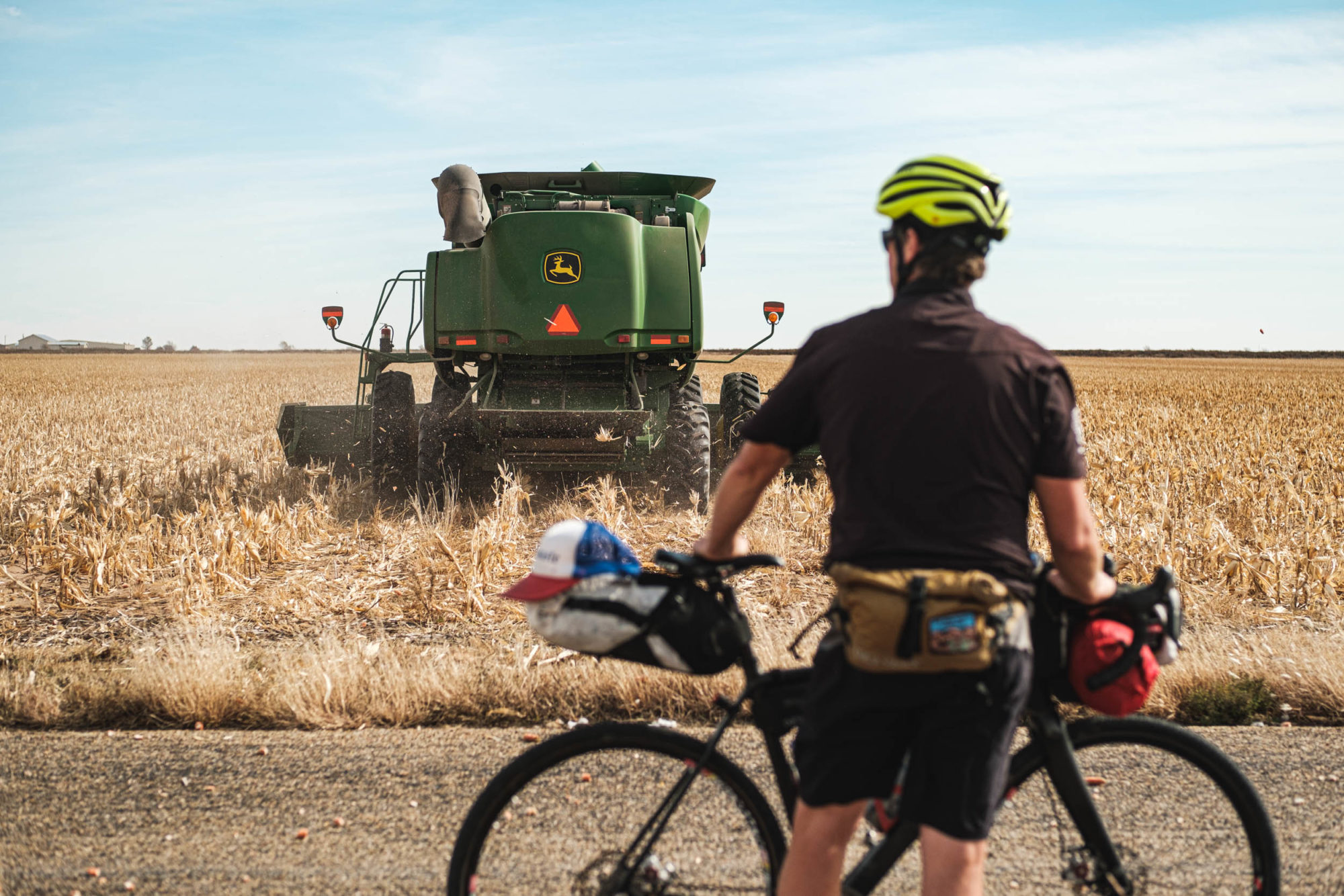
This Great Plains energy exchange looks something like this: Sunlight feeds the grass. Animals eat the grass. Humans hunt the animals. The first inhabitants to make this conversion were the people of the Clovis Culture, some 13,500 years ago. They hunted the massive wooly mammoth, the largest megafauna to ever roam the grasslands of North America. The story of the Clovis Culture, one of the oldest on the continent, resides in the sedimentary layers of an ancient lakebed at the Blackwater Draw National Historic Landmark, 11 miles north of Portales. In 1932, chipped spears (Clovis points) were unearthed among a mass of wooly mammoth bones, and thus the Clovis Culture was discovered. It is one of the most significant archeological sites in North America.
Our trip began this morning at Oasis State Park just a few miles southwest of the Blackwater Draw site. We are following the gravel and dirt roads in and out of Blackwater and Yellow House Draws to Lubbock, Texas. At our terminus is another major archeological site. The Lubbock Lake National Historic Landmark was once an ancient watering hole. Its sedimentary layers document a snapshot of human and animal existence on the South Plains for the last 12,000 years.
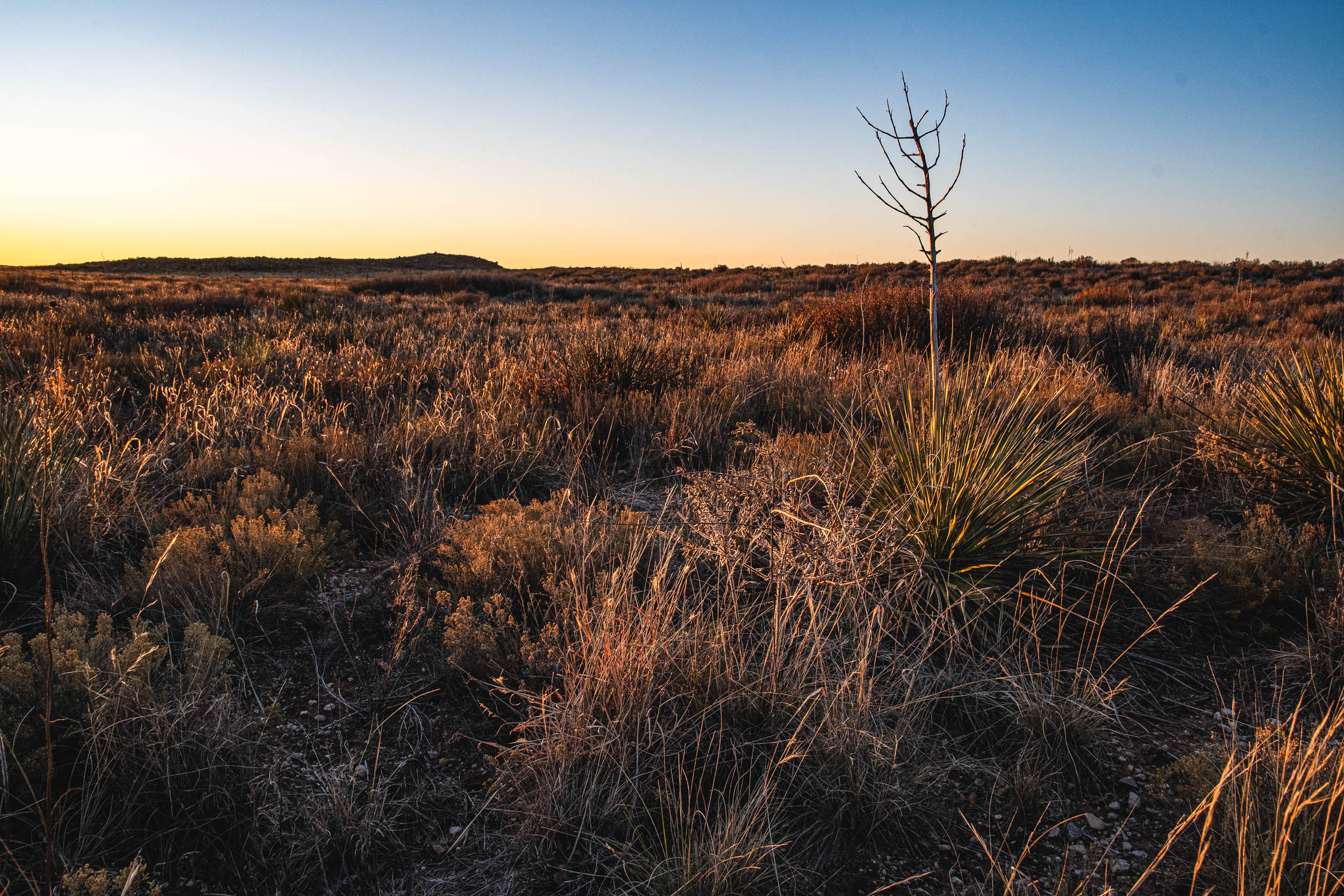
Lunch is over, and we mount our bikes. Jerod takes a couple of shots of the cattle. He swings his camera over his back, looks at me, and shouts, “Listo?” I nod. I’m ready, but I’m still hungry. My caloric energy exchange is crap. But the creative energy I exchange with Jerod has been one of the best collaborations in my writing career.
I’ve known Jerod Foster for just over a year. He’s a professor of practice at Texas Tech University in Lubbock, where he teaches photography and visual storytelling courses, including a bikepacking-specific course called Adventure Media. We first met on assignment covering a bikepacking trip through central Texas for Texas Parks and Wildlife magazine. We were strangers who’d spoken to each other only once—on the phone—before that first trip. What followed were four days and 223 miles of riding, eating, and sleeping within 10 feet of each other. Bikepacking is a darn good litmus test for relationships. Cracks in a person’s disposition will reveal themselves on a bike journey. Our trip was as seamless as an air hockey table. Since that first trip, we’ve worked on three projects together and brainstormed countless future stories. For us, bikepacking has become the great creative incubator.
Just past our lunch spot, we reach our highest elevation at 4,126 feet. It’s not much, but I’ll take it. We hit a stretch of caliche (the preferred backroad coating of Texas) with intermittent sand traps and ride with nary a turn of the bars for nearly 10 miles. We hit a patch of sand and Jerod floats right on through. Justin and I manhandle our bars and both wash out the front end. We push to a patch of hard dirt.
“Lucky for us they’ve seen some rain out here,” Jerod says. “This could have been a real slog.” We’re always thinking about turning rides into stories. “You should include that in the trip report,” he tells me.
Justin looks at the long stretch of sand he and I just hiked through. “You really think anybody will come out here and ride this route?” he asks as he looks at an earth-toned landscape painted in hues of brown, beige, and gray. This is not the epic scenery we’re accustomed to seeing in photo spreads. We all look at each other and shake our heads. The consensus? Probably not.
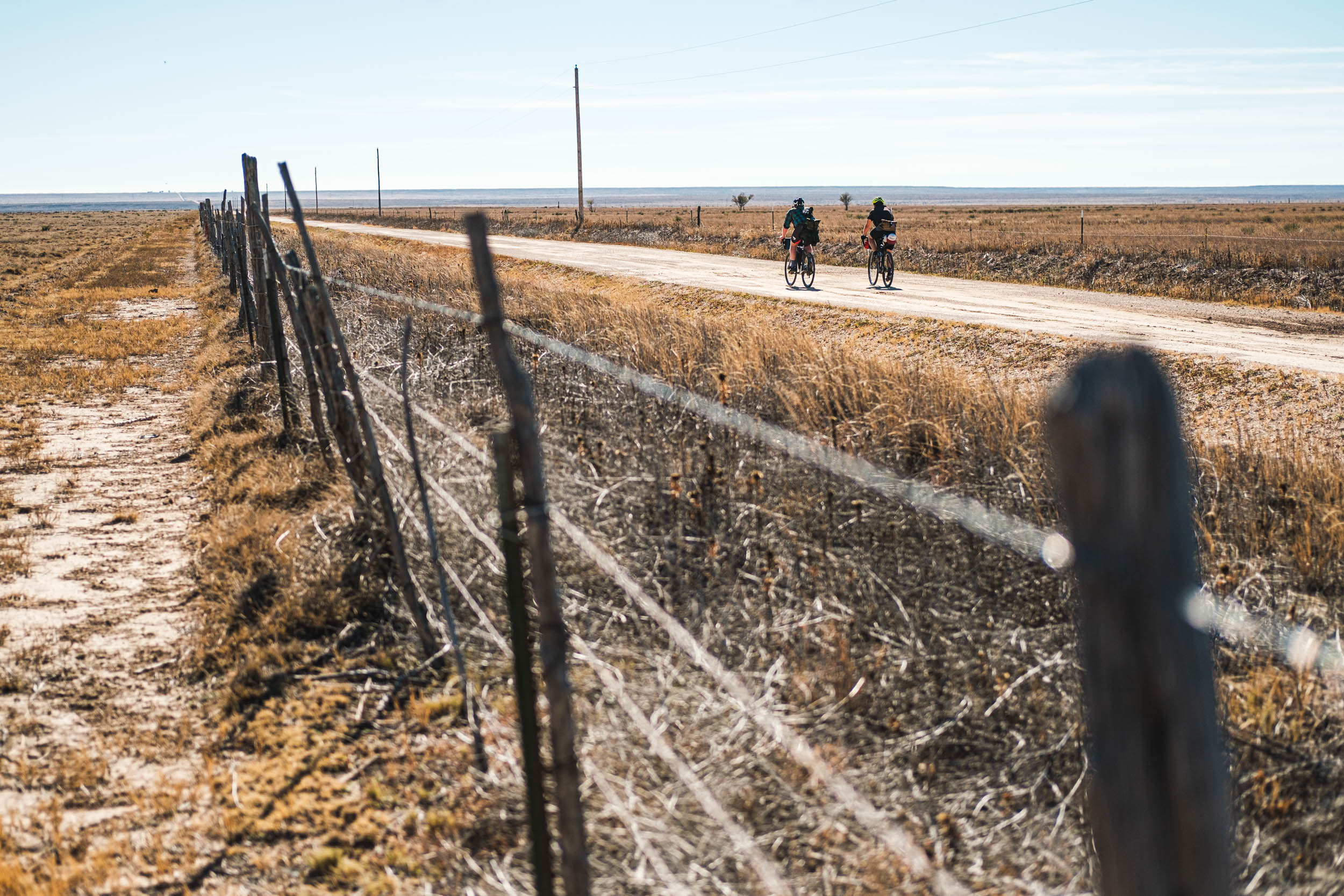
I have to admit I had my reservations when Jerod pitched this trip to me a few months ago. It’s early November now, and I’ve just transitioned back to Texas after living in Salida, Colorado, for the last three years. The high country of the Rocky Mountains and slick rock of Moab, Utah, had been my playground. I could ride out my front door and ascend into the aspens in under an hour. After my wife and I sold our house in July, we packed up our Airstream and spent some time along California’s Central Coast. We rode serpentine trails of coastal mountains and through forests of aromatic eucalyptus groves. So when Jerod said he was eyeballing an overnighter from eastern New Mexico to Lubbock, Texas, I was initially resistant. I grew up an hour from Lubbock and know this area all too well. Or at least I thought I did. It’s brown, flat, windy, and frankly—thanks to all the cattle feedlots and dairies—it stinks. I made a deal with myself a few years back though. When my knee jerk instinct is no, I say yes. That no usually stems from either fear or judgment. Also, I trust Jerod’s adventure barometer immensely. If the route moves his needle, I’m in!
We drop into Yellow House Draw and pass a salty playa lake named Baileyboro. Our climb out is the toughest we’ll see on this ride. It’s fantastic—quick and punchy with just enough loose rock to make you stay in the saddle for traction. We make a couple more turns before dropping down a hill and into the west entrance of the Muleshoe National Wildlife Refuge, our campsite for the night.
There’s a cluster of buildings around the headquarters and visitor center, but other than that, it’s a panoramic view of untouched prairie. Endless strands of sun-nourished, high grass pack a horizon of rolling hills like a topographical convoy. Protruding from the prairie is a small set of craggy cliffs, flanking a shallow lake in the distance. We ride to an overlook to get a better view. We hear them before we see them, the bugling and honking of 10,000 sandhill cranes. They’re roosting in the saline waters of White Lake. The refuge is along the Central Flyway, and these birds are wintering here as they make their migration south. Their numbers can swell to 100,000 among the refuge’s three lakes during the peak season of December through February.
Jerod and Justin wander into the waist-high grass and crouch down to get pictures of the sunlight filtering through the stems and seed heads. The refuge was established in 1935 to protect the habitat of waterfowl and sandhill cranes. It’s a rare island of public land in this part of Texas. It was saved from cropland conversion, and most of its short-grass prairies have never seen a plow. Jerod marvels. “Just look at this Bluestem!” he says in awe. The flora, fauna, history, and culture of North America’s great grasslands have captured Jerod’s imagination. It’s one of his greatest passions and one of the drivers behind this overnighter. He read Dan Flores’s American Serengeti a few years ago, and its subject matter spoke to him. The Great Plains and the giant beasts that once roamed this ancient savanna primed him to pursue his own energy exchange in this forgotten ecological part of North America. He’s currently developing a bikepacking route from Texas to Canada along the Great Plains, which will be accompanied by a documentary and a book. Its scale is grand, but so is Jerod’s ambition.
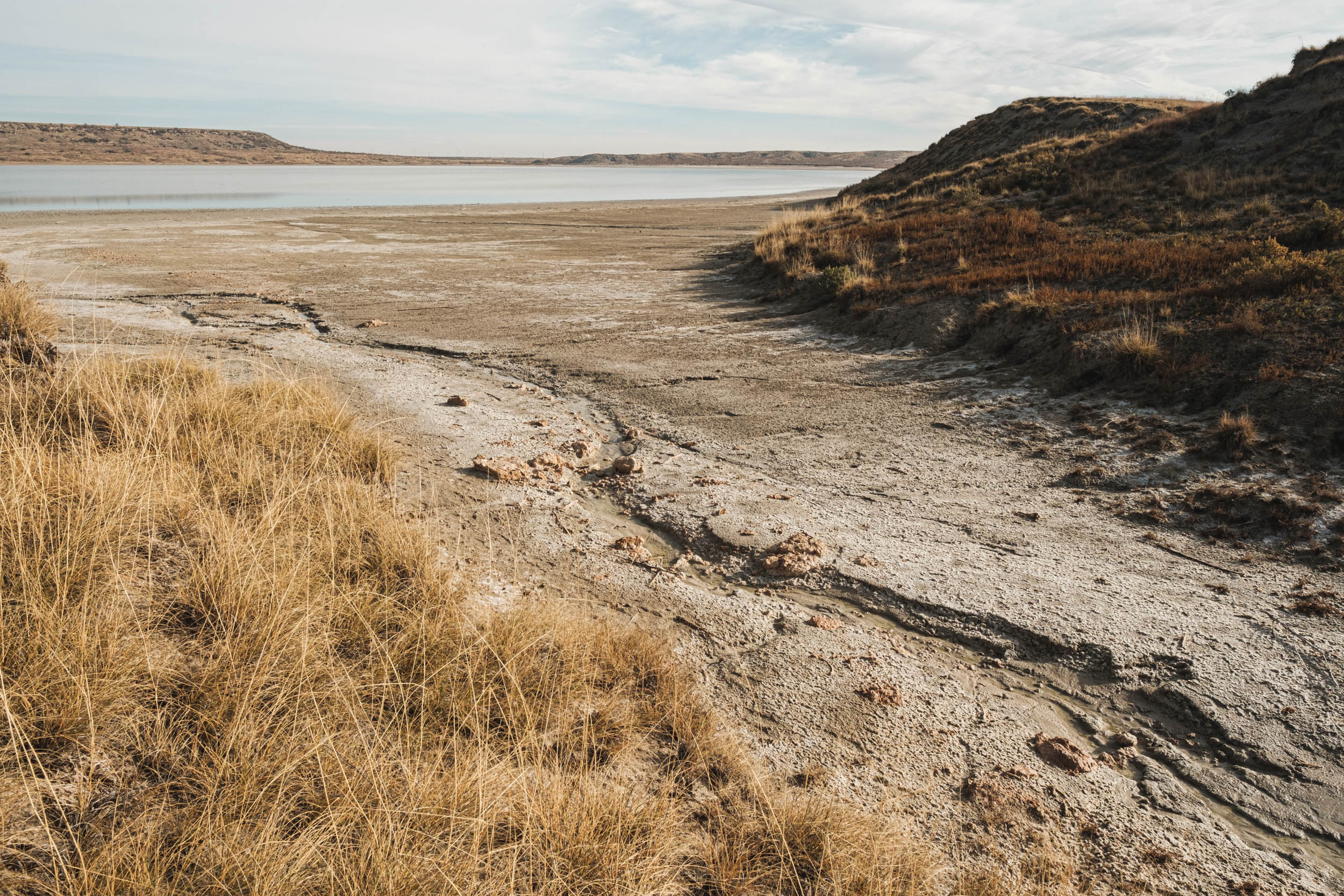
We set up camp in a grassy field under some pecan trees just as the sun goes down. We have the whole 6,440-acre refuge to ourselves. There’s no staff. No visitors. Just us, the cranes, and some yipping coyotes. That’s been the theme so far. The last time we heard an internal combustion engine was 50 miles ago in Portales. That’s also the last time we saw another human.
We sit at a picnic table, cook dinner, and revel in our isolation. Justin hands out some of his homemade deer jerky. Justin is an old soul for 26, and I’m constantly inspired by his work ethic and self-reliance. He’s a former student and Adventure Media alumnus. He is currently an adjunct professor at Texas Tech and a prolific freelance photographer. His deer jerky is the best I’ve ever eaten.
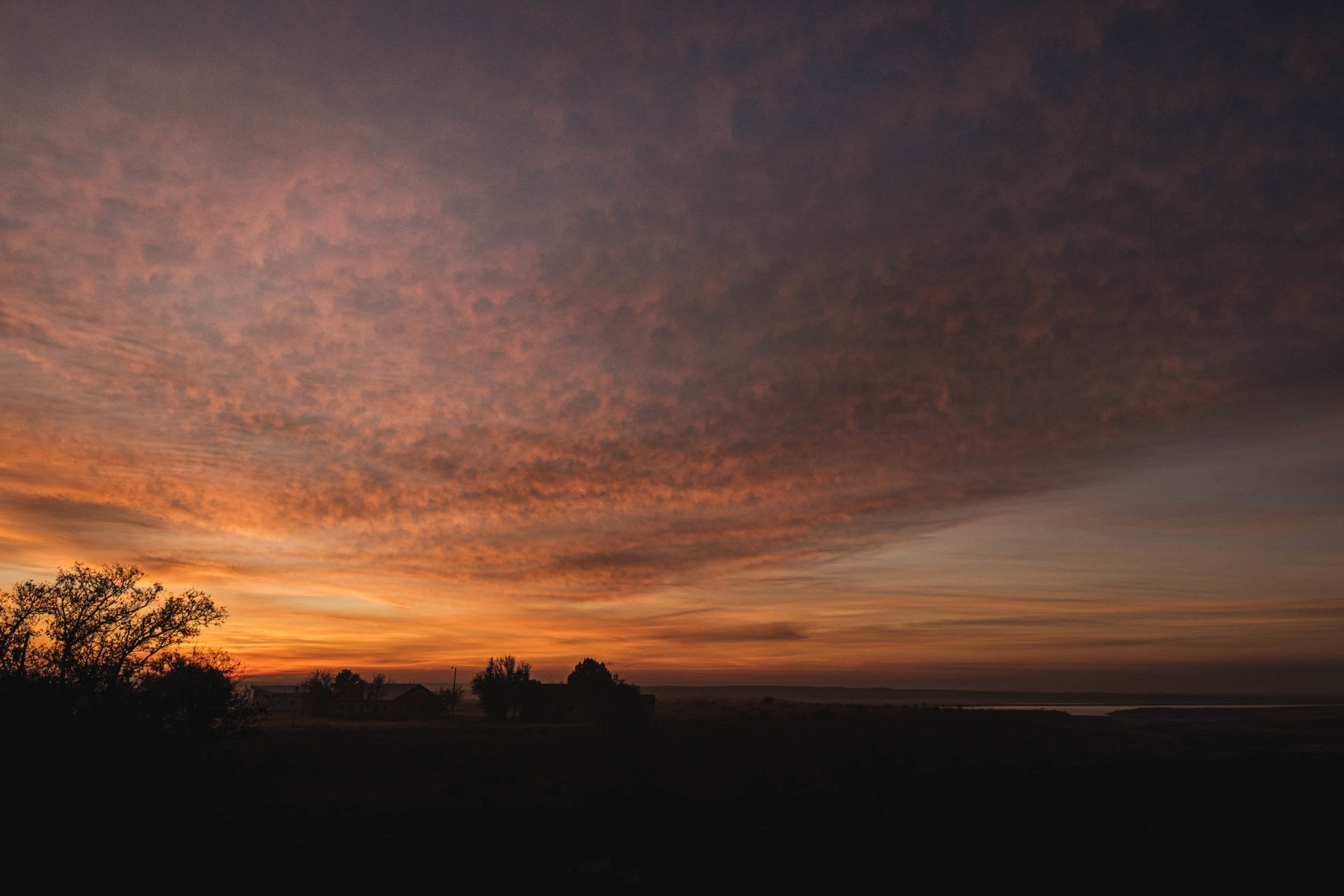
“How many deer did you end up with in your freezer,” I ask him. “Three,” he says. “You live in an apartment in Lubbock, right?” I ask. He nods. “You processed three deer in your apartment?” He nods again. He explains that he calculated what his food budget would be for the year and decided to buy the cheapest meat grinder, and he still came out ahead. This is another one of those great energy exchange moments. Not only is the deer jerky satiating my hunger, but the conversation is satiating my soul. I don’t know many other forms of locomotion where I’d travel this intimately with someone 22 years (ouch) my junior. I’m not a communal person, but I’ve found bikepacking enables me to be in a group and still have my own space. I have flourished personally and professionally from that collaborative energy.
The next morning at breakfast, I spill half my granola while opening the bag. I’m counting calories today, but in reverse. I need as many as possible for that great transference of energy into momentum. Our next opportunity for food and water is 48 miles away.

We ride out the east entrance of the refuge and find our soil for today. Today’s route will be 90 miles of the world’s longest cyclocross course. Sharp, abrupt turns, long sand traps, and some bike carries. The primary topping will be gravel with intermittent stretches of dirt. We find our road and ride completely straight, no turns, no curves, for 12 miles. Jerod tells me the original draft for this route had a 25-mile straight stretch. “I looked at it and thought, that’s not right,” he says.
An old tire marked with “no trespassing” in white lettering thwarts our progress. We’re trying to ride close enough to Yellow House Ranch to lay eyes and camera lenses on the Casas Amarillas (yellow houses). Spanish explorers were the first non-indigenous humans to see the rock formations underneath the Caprock Escarpment and likened it to a city. They used this route we’re following through Yellow House and Blackwater Draw in the 17th century because it offered the only reliable sources of water and was the only discernible feature in the vast sea of grass comprising the Llano Estacado at that time.
Lucky for us we have GPS. We backtrack to a gravel crossroad. Jerod pulls out his phone and cross checks his GPS. I study the intersection of nothing and nowhere. To my right, a pile of tumbleweeds push and shove one another against a barbed wire fence. To my left are barren cotton stocks in an infinite field of dirt. Straight looks exactly like what’s been behind us for the last 90 miles. We’ve ridden through more than 50 crossroads just like this gravel confluence. The metaphor I was trying to concoct back in Arch is coming into focus. Retreat and stall progress. Go left or right and maintain the status quo. But forward—even though it looks like where you’ve been—is still progress. It’s how you travel that path, and who you travel it with, that makes all the difference. Any direction you ride with Jerod is momentum for life. His positive, curious nature makes him an insightful photographer and storyteller. It also makes him one of the best teachers I’ve ever met. I once thought that at this stage in my life, you don’t make really close, new friends. Bikepacking has proven me wrong.
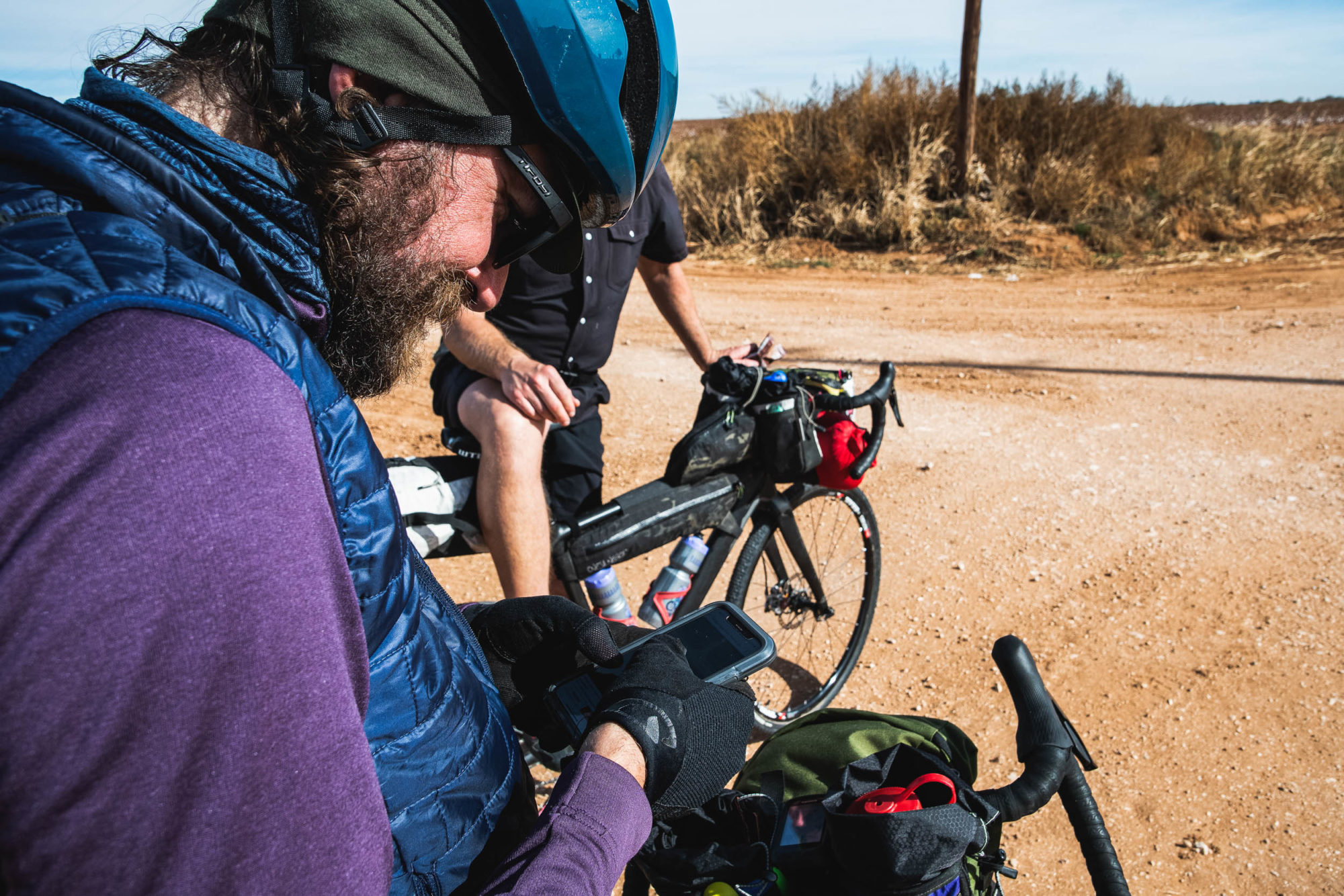
We never get to see the mythical yellow houses. My caloric gas tank is empty. We ride into the tiny town of Anton. It’s not a ghost town, but it’s barely surviving. We hit the only food source, L&D’s Quickmart, where we interact with humans for the first time in over 30 hours. We weren’t remote in the sense of backcountry wilderness, but we were isolated and detached from the normal flow of modern life on the plains. We were riding with the lives of the past. This transition back into the modern world is always strange. I grab a bag of Fritos and bean dip. Jerod eats a corndog and fried burrito. Justin throws back a Snickers bar and Fritos. This energy exchange isn’t pretty, but it’s what’s available. We sit on the concrete, lean against the shaded brick wall of the Quickmart, and observe daily life in Anton. A cowboy towing a stock trailer pulls up to the gas pump. As he walks into the store, he gives us a welcoming grin. “Is the wind with ya or against ya today?” Jerod nods his head. “Most definitely with us.”
In the final 48 miles we slowly integrate back into a noisy world. Cars and trucks swoosh past us near Shallowater, one of Lubbock’s satellite suburbs. We actually see people moving about outside. We stop at a railroad crossing as a freight train lumbers by like a mechanical beast. The clickity-clack of metal wheels on the rail acts as a metronome, assimilating us back into the rhythm of life in the city.
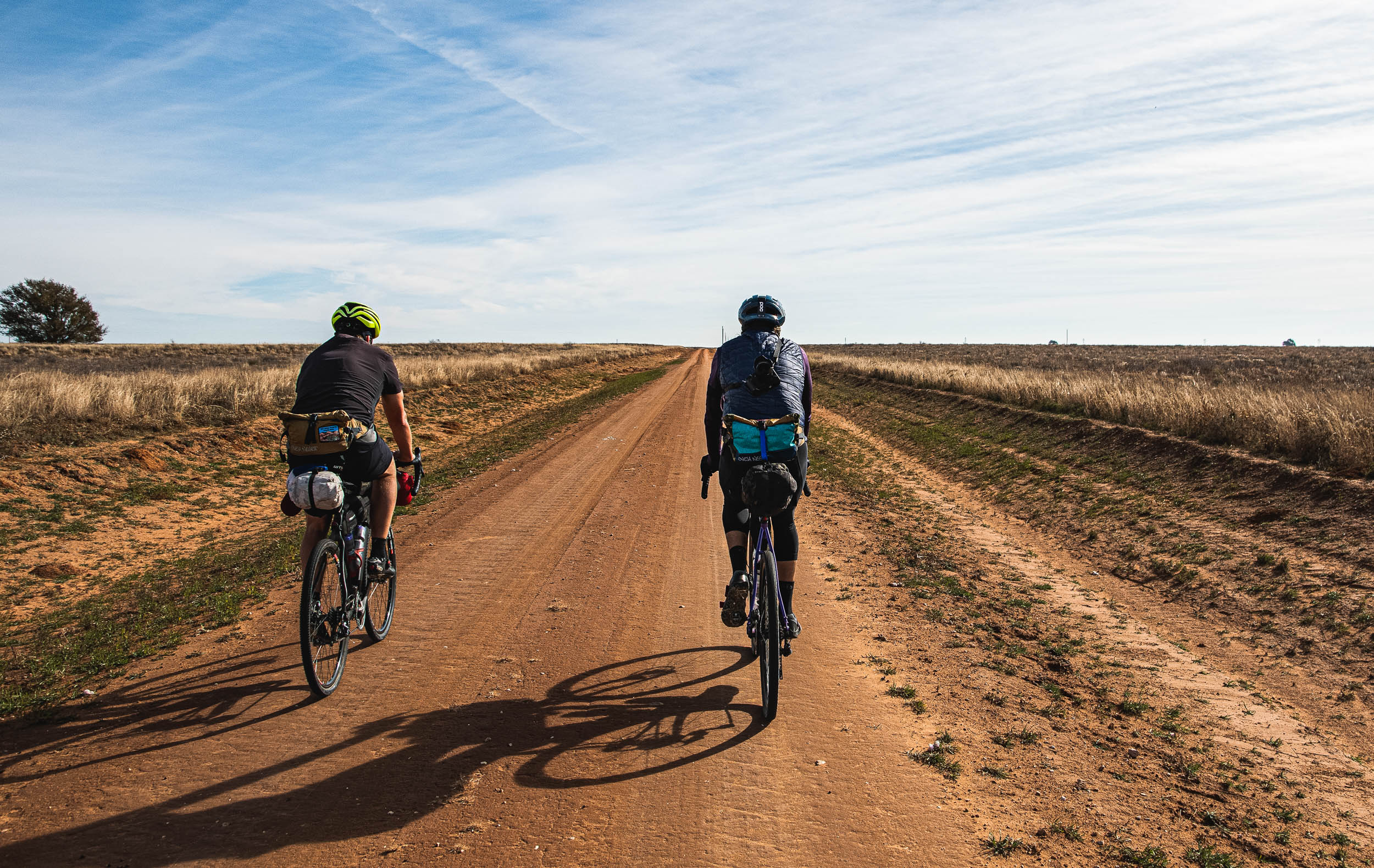
We ride up to the visitor center for the Lubbock Lake National Historic Landmark and are greeted by a massive Columbian Mammoth sculpture. We go inside to sign the guest registry. It makes it all very official. The trip is over. And what a fantastic trip it has been. It hasn’t been idyllic or scenic in a Grand Canyon overlook sense. It’s been one of those trips where you have to look inside to find that travel epiphany. Open your mind to the possibility that there may be something special in a place you always took for granted. Adventure is to be had anywhere. Bikepacking is not all I do. It’s what I need to do to know where I come from and give me insight to where I’m going.
Everyone’s energy tank is depleted. Thankfully, there’s an endless choice of refill stations in Lubbock. We do some calculating and deduce the densest source of energy obtainable is carbohydrate-rich flatbread with cheese. Barley and hops liquid nourishment is also required. Pizza and beer it is. Jerod knows just the place!







